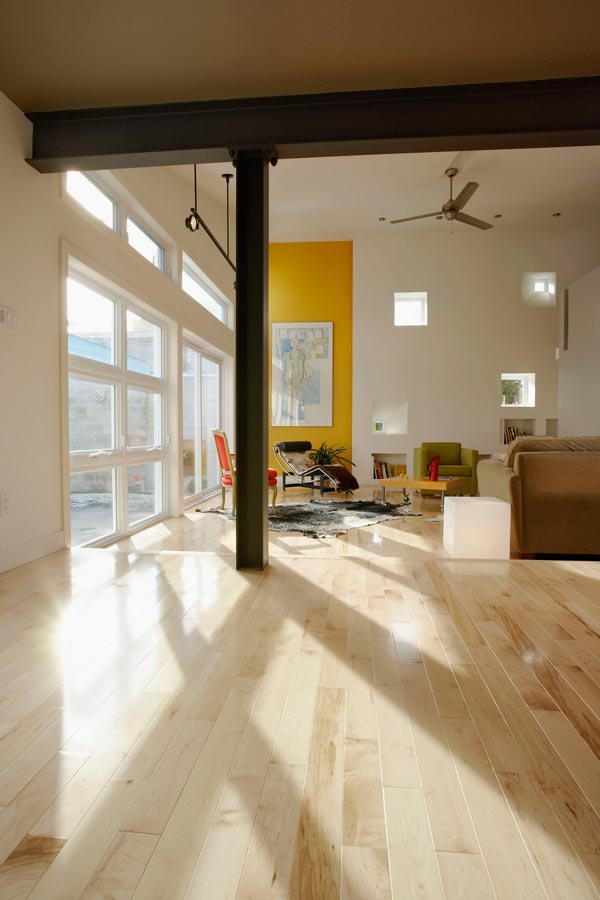Choosing a Wood Floor - Step 1 - Location & Lifestyle
STEP ONE: Investing in a wood floor that you love and that will last might not be as simple as you think. It takes knowledge, experience and a willingness to ask the right questions to determine the wood flooring solution right for you. Before you start to think about what wood species would look best, do a bit of research on hardwood flooring installation. It will help you find the right professional and to make informed choices.
According to the NWFA and our nearly 30 years of experience, here are the questions that every hardwood flooring professional should ask before they ask, “what type of floor do you want?”
Tell me about the home you live in?
The longevity and trouble-free nature of hardwood flooring depends upon selecting both the proper wood floor type and subflooring for your home and circumstances. With this in mind, a flooring contractor should start a conversation by asking about the general conditions of your home.
Knowing that you live in an open concept home by the lake in Highland Park versus a 30th floor condo in a Gold Coast high rise definitely makes a difference. For example, if you live in a Chicago condo, the chances are that your association has rules about wood flooring installation. Most condo associations, especially those with concrete subfloors, require that a sound absorbing material be used as an underlayment. If your flooring contractor doesn’t follow the Association rules, you could be compelled to tear up the newly finished floor and install the noise barrier.

In what room will the wood floor be installed?
The one universal truth about wood is that it is hydroscopic – it absorbs water. This means that changes in humidity can cause challenges and certain types of wood flooring are better suited for potentially wet or humid conditions than others. If your desire is to have wood flooring in a room were humidity exists, then engineered wood flooring is likely the proper solution. Because of the dimensional stability of crisscrossed layers of veneer, engineered flooring is less susceptible to expansion, cupping and curling. And what about wood floors in a bathroom? A good installer will sell you the engineered wood flooring he thinks best for a bathroom. A great installer will listen attentively and then guide you towards ceramic tiles or laminates that not only have the appearance and texture of wood, but that also resist water damage.How will the room be used?
Not all kitchens are used in the same way and how your household uses each space will help to determine the best wood flooring solution for you. For example, if yours is an active kitchen with lots of cooking going on, then prefinished flooring might be the best solution because of its tougher, wear-resistant coating. On the other hand, unfinished flooring works just fine in a busy kitchen if proper protection, care and maintenance are employed. If you’re meticulous with your home, the extra care required by unfinished flooring choices might not be a bother. If you’re prone to dropping utensils or are a particularly exuberant cook, a more forgiving flooring or finish might be in order. The flooring specialist you choose should be prepared to offer the pluses and minuses of the various wood flooring choices that are available. The quality and longevity of your new floor will reflect the flooring company’s knowledge of and access to the latest flooring types and options. As with most remodeling and construction choices, the thought and preparation hidden by the final, beautiful coating on your wood floor is the most important part of the process.
